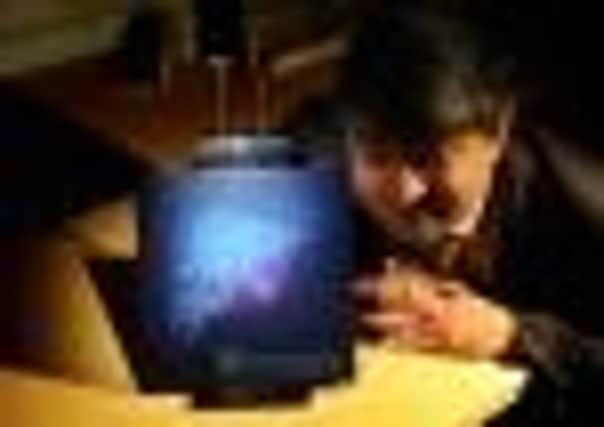It’s a new dimension for liver treatments


It is hoped their 3D coloured imaging technique will help surgeons prepare for operations, and enable more accurate use of treatments such as radiotherapy.
The holograms created by the firm Holoxica are “printed” on to white sheets of paper, and when a light is shone on them, 3D colour images spring out.
Advertisement
Hide AdAdvertisement
Hide AdThe viewer can move around the hologram, seeing it from different angles, and viewing structures inside the organ, with no need for 3D glasses. Holoxica founder Javid Khan said: “We’ve been using scan data like an MRI scan or CT scan and we work with an institute in Germany, so they’ve got the scan and we convert it into a computer model and another company prints it.
“It’s like looking at an X-ray but in 3D, and it’s in colour.
“We can make it transparent so in the liver you’ve got the tissue and arteries and veins going in and out so we can put those in different colours and we can highlight tumours in different colours. The applications are quite diverse. It’s for surgeons to find their way around quite complicated structures, to see where the tumours are in three-dimensional space.
“When you’re under the knife you want your surgeon to have the best information available, so it’s for depth perception, to help pin-point the location of these tumours so they can cut them out.”
Advertisement
Hide AdAdvertisement
Hide AdMr Khan hopes to be able to create different kinds of holographic organs based on individual patient data to help doctors treat a range of conditions.
He said: “We can do other organs if we get the data. We haven’t actually done it yet, but we’re looking at other projects where you’ve got MRI scans of a whole body or different parts of the anatomy – if it can be scanned we can do it.
“We’ve been working our way up, we did atoms, molecules, protein strings, and now we’ve done a liver. We’re up for doing a whole body if we can get a data set.”
The firm has been working on the project with the German Fraunhofer Institute, which provided scan data from a volunteer to create the image. The institute will now decide whether to pour more money into developing the system for widespread use by doctors.
Advertisement
Hide AdAdvertisement
Hide AdMr Khan said: “The hologram we’ve done at the moment is a test one and they’re going to show it to the surgeons and get some feedback.
“We’ve done a healthy one but we’re going to do one that’s diseased next, if the surgeons like it.
“It could be deployed pretty much immediately into hospitals if necessary.”